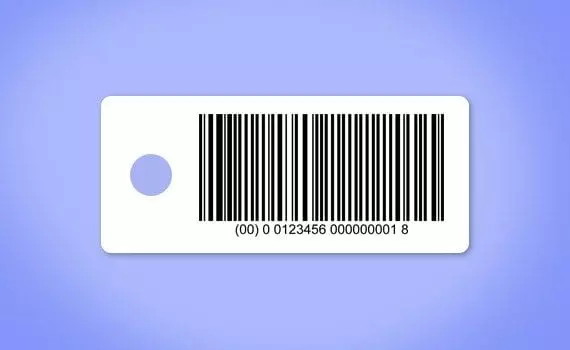Clear labels play a vital role in creating unique branding for your business. They help you communicate your brand’s values, identity, and messaging to your target audience effectively. In this article, we will explore the importance of clear labels in branding, steps to create them, tips for designing effective labels, implementing them into your branding strategy, and measuring their impact on your brand.
Understanding the Importance of Clear Labels in Branding
In order to create a strong brand, it is crucial to understand the importance of clear labels. Clear labels serve as a visual representation of your brand and help create a consistent brand image across all your products and marketing materials. They convey your brand’s key messages, differentiate your products from competitors, and create instant recognition among your target audience.
Defining Clear Labels
Clear labels are carefully designed and crafted labels that communicate your brand’s unique value proposition. They incorporate essential elements such as your brand logo, brand colors, typography, and messaging to create a cohesive visual identity.
When designing clear labels, it is important to consider various factors such as the size, shape, and material of the label. These elements should be chosen strategically to ensure that the label not only stands out but also aligns with your brand’s overall aesthetic. For example, if your brand is known for its eco-friendly values, you might opt for labels made from recycled materials.
The Role of Clear Labels in Branding
Clear labels play a crucial role in reinforcing your brand’s identity and conveying its core values to consumers. They help build trust, establish credibility, and create a lasting impression. Clear labels also make it easier for consumers to identify and choose your products over others, enhancing brand loyalty.
Moreover, clear labels provide an opportunity to showcase additional information about your product. You can use the space on the label to highlight key features, ingredients, or any certifications your product may have. This not only helps consumers make informed purchasing decisions but also adds value to your brand by demonstrating transparency and quality.
Furthermore, clear labels can be a powerful tool for storytelling. By incorporating compelling visuals or concise narratives on your labels, you can captivate your audience and create an emotional connection with your brand. This storytelling aspect can be particularly effective in industries such as food and beverages, where consumers are often looking for products that align with their personal values and preferences.
Steps to Create Clear Labels for Your Business
Creating clear labels requires careful planning and attention to detail. Here are the steps to follow:
Identifying Your Brand’s Core Values
Start by identifying your brand’s core values and unique selling proposition. This will guide your label design and ensure it aligns with your brand’s overall message.
When identifying your brand’s core values, think about what sets your business apart from the competition. Is it your commitment to sustainability, your dedication to quality, or your exceptional customer service? Understanding these core values will help you create labels that not only communicate important information but also resonate with your target audience.
Translating Your Brand’s Identity into Clear Labels
Next, translate your brand’s identity into clear labels. Consider using your brand logo, colors, and typography that reflect your brand’s personality and style.
Your brand’s identity is more than just a logo or a color scheme; it encompasses the emotions and perceptions that people associate with your business. When designing your labels, think about how you want your customers to feel when they interact with your products. Do you want to evoke a sense of luxury, playfulness, or trustworthiness? By aligning your label design with your brand’s identity, you can create a cohesive and memorable experience for your customers.
Furthermore, it’s important to consider the practical aspects of label design. Clear labels should not only be visually appealing but also easy to read and understand. Choose fonts that are legible and avoid cluttering the label with excessive information. Remember, simplicity is key when it comes to clear labels.
By following these steps and paying attention to the details, you can create clear labels that effectively communicate your brand’s message and leave a lasting impression on your customers. Remember, your labels are an extension of your brand, so make sure they reflect the values and identity that make your business unique.
Tips for Designing Clear and Effective Labels
Designing clear and effective labels requires thought and creativity. Consider the following tips:
Labels play a crucial role in capturing consumers’ attention and conveying important information about your product. They are the first point of contact between your brand and potential customers, so it’s essential to make a strong visual impact. Here are a couple of additional tips to help you create labels that stand out:
Choosing the Right Color Scheme
Colors evoke emotions and can influence how consumers perceive your brand. When selecting a color scheme for your labels, it’s important to consider the psychology behind different colors. For example, warm colors like red and orange can create a sense of excitement and urgency, while cool colors like blue and green can evoke feelings of calmness and trust. By understanding the emotional impact of colors, you can choose a color scheme that aligns with your brand’s personality and appeals to your target audience.
Additionally, it’s worth considering the cultural connotations of colors. Different colors hold different meanings in various cultures, so it’s important to research and ensure that your chosen color scheme doesn’t inadvertently convey a message that contradicts your brand values or offends your target market.
Selecting the Appropriate Typography
The typography you choose for your labels can greatly impact brand perception. Fonts have personalities of their own, and selecting the right one can help reinforce your brand’s identity. When choosing typography for your labels, consider factors such as legibility, brand consistency, and overall design enhancement.
Legibility is of utmost importance when it comes to labels. Ensure that the font you choose is easily readable, even at smaller sizes. It’s also crucial to maintain brand consistency by using fonts that are in line with your brand’s visual identity. If your brand is known for its sleek and modern aesthetic, consider using clean and minimalist fonts. On the other hand, if your brand has a more playful and whimsical personality, you can experiment with fun and creative fonts that reflect that vibe.
Remember, the typography you choose should complement the overall design of your label and enhance its visual appeal. It should not overpower the other elements but rather work harmoniously to create a cohesive and eye-catching label.

Implementing Clear Labels into Your Branding Strategy
Once you have designed clear labels, it’s essential to implement them effectively into your branding strategy. Clear labels play a crucial role in communicating your brand’s message and values to your target audience. They not only provide important information about your products or services but also serve as a visual representation of your brand identity.
When incorporating clear labels into your branding strategy, it’s important to consider their placement and usage across various brand elements. Ensure that your clear labels are used consistently across all brand elements, including packaging, marketing materials, and digital platforms. By doing so, you create a cohesive brand image that resonates with your audience and reinforces brand recognition.
Incorporating Labels in Various Brand Elements
When it comes to packaging, clear labels can be strategically placed to catch the eye of potential customers. Whether it’s on the front of a product, the side of a box, or the lid of a jar, the placement of your clear labels should be thoughtfully considered to maximize visibility and impact. Additionally, incorporating clear labels into your marketing materials, such as brochures or flyers, can further enhance brand consistency and create a unified brand experience.
Furthermore, in today’s digital age, it’s crucial to extend the usage of clear labels to your online presence. This includes your website, social media profiles, and any other digital channels where your brand is present. Consistency in using clear labels across different platforms is key. By incorporating clear labels into your website design, you create a seamless brand experience for your online visitors. Similarly, using clear labels consistently across your social media profiles helps build brand recognition and reinforces brand identity.
Consistency in Using Labels Across Different Platforms
Consistency is a fundamental aspect of effective branding. When it comes to clear labels, this principle holds true. Consistency in using clear labels across different platforms helps create a unified brand identity that is easily recognizable by your target audience. Whether a customer encounters your brand on your website, social media, or physical packaging, the consistent usage of clear labels ensures that they can easily associate the visual elements with your brand.
Moreover, clear labels can also contribute to the overall aesthetic appeal of your brand. By incorporating visually appealing design elements, such as colors, typography, and graphics, into your clear labels, you can create a brand image that is not only informative but also visually engaging. This can leave a lasting impression on your audience and make your brand more memorable.
Measuring the Impact of Clear Labels on Your Brand
It’s essential to measure the impact of clear labels on your branding efforts to understand their effectiveness.
Evaluating Brand Recognition
Track brand recognition to assess the impact of your clear labels. Conduct surveys, analyze customer feedback, and monitor social media mentions to gauge the level of brand recall among your target audience.
Assessing Customer Engagement and Loyalty
Observe the level of customer engagement and loyalty resulting from your clear labels. Monitor sales, repeat purchases, and customer feedback to determine the impact on customer loyalty and overall brand perception.
In summary, clear labels are an essential tool in creating unique branding for your business. By understanding their importance, following the steps to create them, implementing them effectively, and measuring their impact, you can create a strong brand identity that resonates with your target audience. So, start harnessing the power of clear labels to elevate your brand and stand out in the competitive market.
Read also= Mark Singer Gorilla Glue Net Worth: Surprising Facts (2024 Update)














